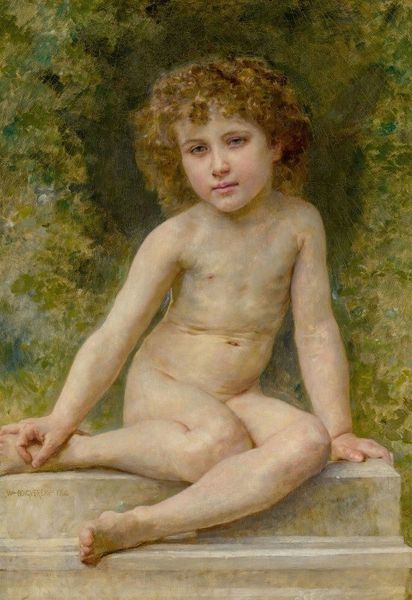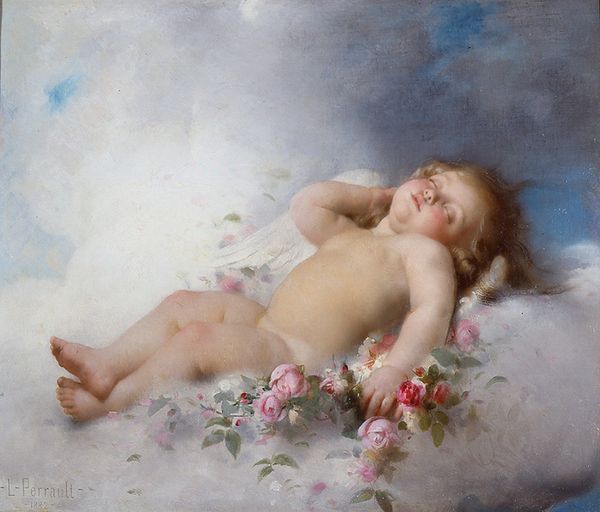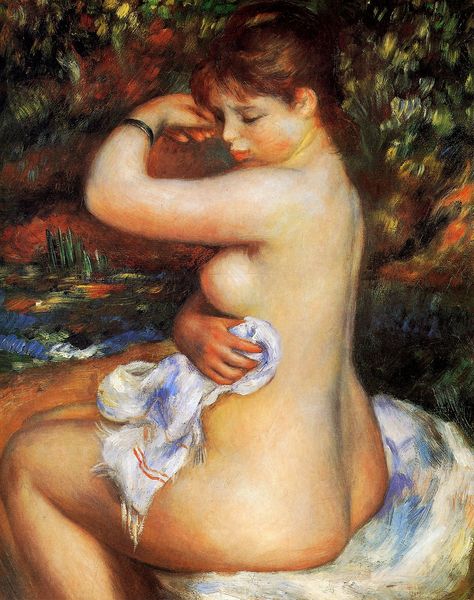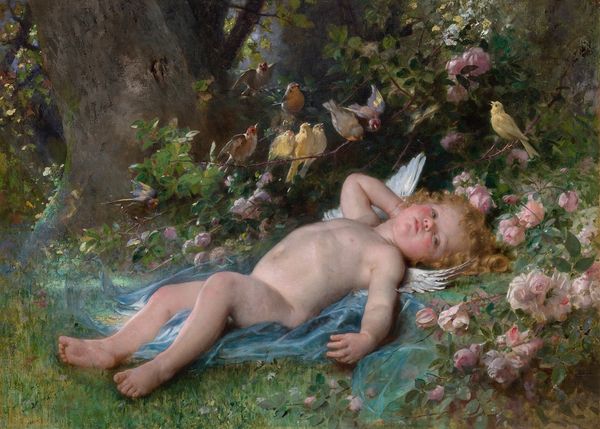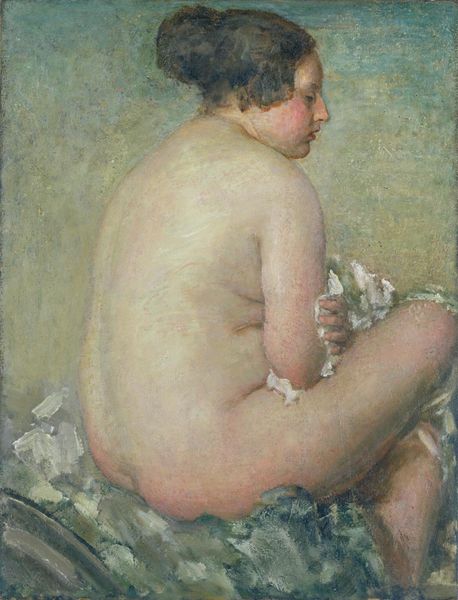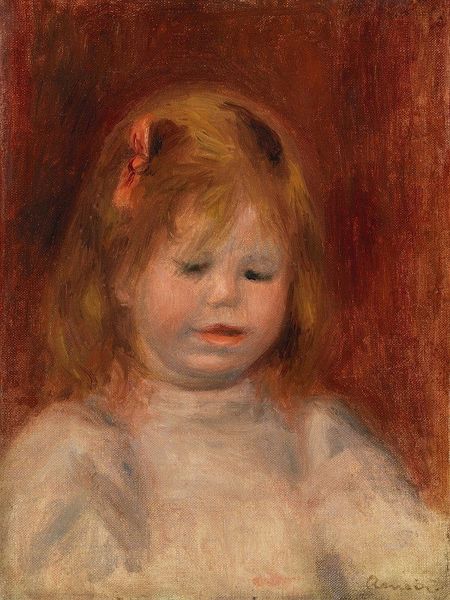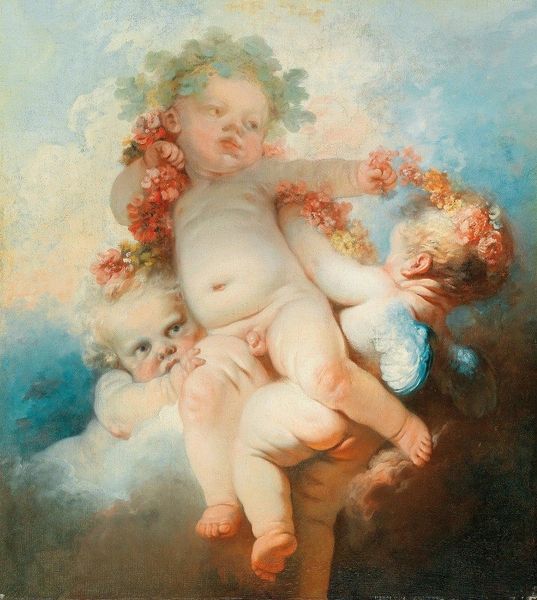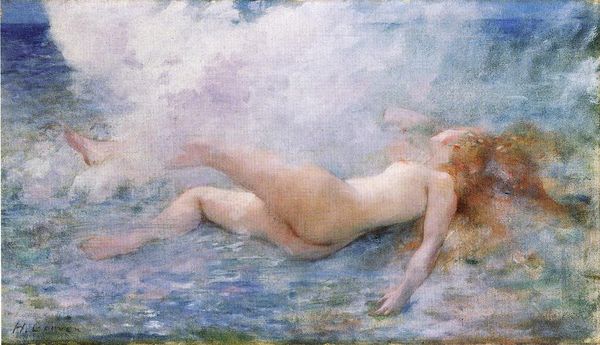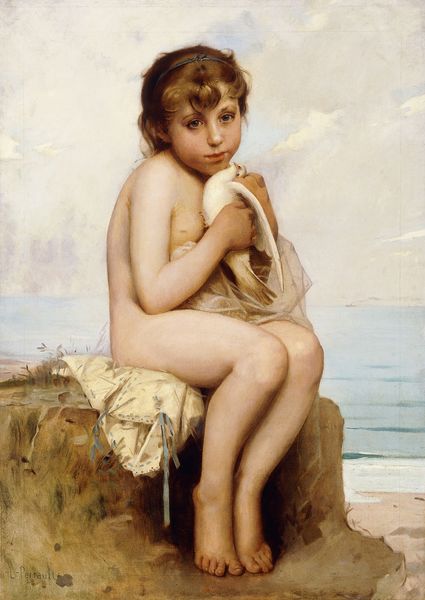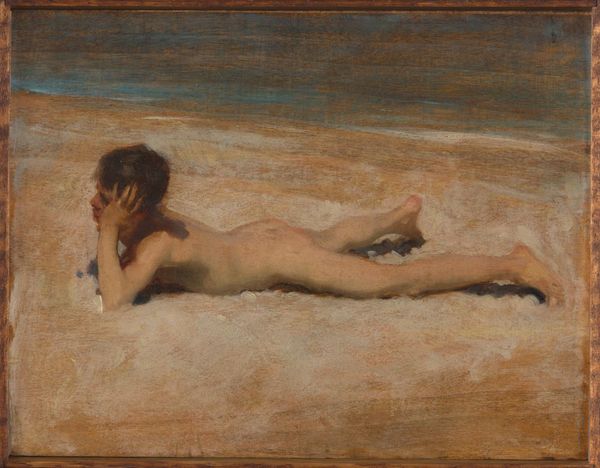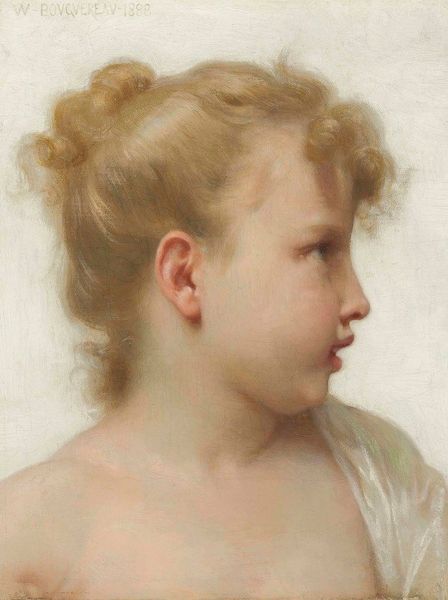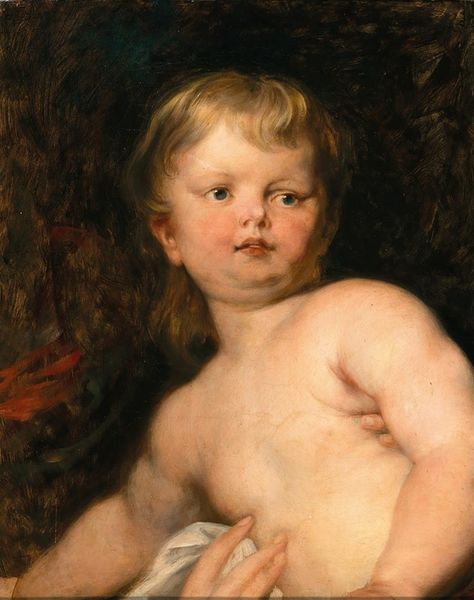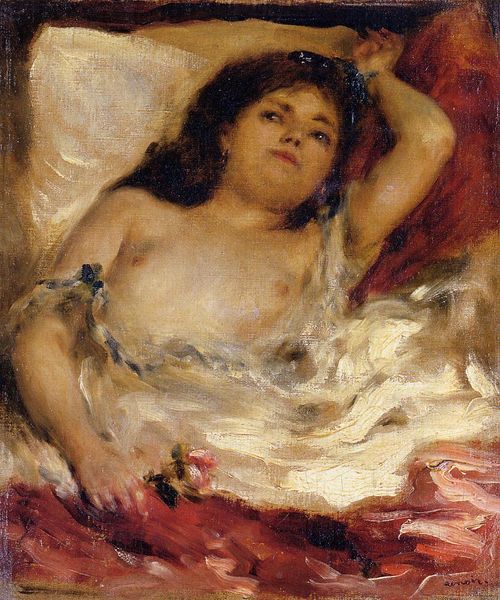
painting, oil-paint
#
portrait
#
figurative
#
painting
#
oil-paint
#
figuration
#
oil painting
#
romanticism
#
genre-painting
#
academic-art
#
nude
#
portrait art
Copyright: Public Domain: Artvee
Konstantin Makovsky painted this Cherub in Russia sometime before his death in 1915. At first glance, the painting's subject seems to be a universal symbol of innocence, but it’s worth considering how the figure of a child might also carry specific cultural meanings. Paintings of cherubic children were popular in the late 19th century, reflecting a broader interest in sentimental, domestic subjects, and often, a conservative focus on the nuclear family. Makovsky was one of the most fashionable Russian artists of the time and so it is likely that he would be very familiar with trends in painting, perhaps even elsewhere in Europe. The seemingly casual pose and soft brushwork are consistent with a modern approach to painting, but in Russia at this time there were debates about the relationship between art and social change. To get a fuller picture, we need to consult historical resources, such as exhibition reviews and other writings from the period to understand how a painting like this was actually perceived at the time. The meaning of art is always contingent on the social and institutional context in which it is produced and viewed.
Comments
No comments
Be the first to comment and join the conversation on the ultimate creative platform.
